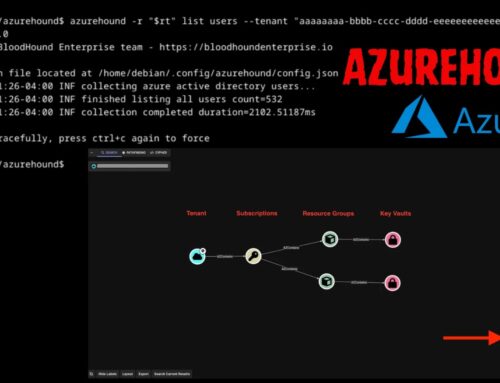
New ‘Point-and-Click’ Phishing Kit Bypasses User Awareness and Security Filters to Deliver Malicious Payloads
A disturbing new development in the cybercrime landscape threatens to escalate the effectiveness of phishing attacks. A novel “point-and-click” phishing kit has emerged, significantly lowering the technical barrier for threat actors to launch sophisticated, evasive campaigns. This toolkit is designed not only to bypass traditional security filters but also to actively circumvent user awareness, making it a formidable new weapon in the hands of malicious actors.
The Evolution of Phishing: Simplicity Meets Sophistication
For too long, the success of phishing campaigns often hinged on either the attacker’s technical prowess or sheer volume. This new “point-and-click” kit fundamentally shifts that dynamic. It integrates an intuitive web interface with powerful, stealthy payload delivery mechanisms, allowing even less experienced attackers to orchestrate highly targeted and convincing lures.
Operators of this kit can select from a library of preconfigured templates, which often mimic legitimate login pages for popular services or corporate portals. They can then customize branding elements, such as logos and color schemes, to precisely match the target organization. This level of customization ensures that the phishing page appears highly credible to the unsuspecting victim, blurring the lines between genuine and fraudulent communications.
Bypassing Defenses: How the Kit Operates
The kit’s ability to bypass established security filters and user awareness measures is particularly concerning. While the exact technical details of its evasion mechanisms are often proprietary to the kit developers, common tactics employed by such sophisticated kits might include:
- Dynamic Content Generation: Phishing pages might be generated on the fly, presenting unique URLs or content hashes for each victim, making it harder for automated systems to detect and blacklist.
- URL Redirection Chains: Employing multiple redirects through seemingly benign domains before landing on the actual phishing page can confound URL reputation systems.
- Anti-Analysis Techniques: The kit may incorporate elements that detect sandboxed environments or virtual machines, presenting benign content to automated security tools while serving the malicious payload to human users.
- Social Engineering at Scale: The ease of customization allows threat actors to craft hyper-targeted messages, exploiting human psychology and the victim’s trust in familiar brands or internal communications.
Once a victim interacts with a deployed phishing page, the kit is engineered to deliver various malicious payloads. These can range from credential harvesting, where usernames and passwords are stolen, to the deployment of malware such as remote access trojans (RATs) or ransomware. This direct payload delivery streamlines the attack chain for cybercriminals.
Remediation Actions and Proactive Defense
Combating this new generation of “point-and-click” phishing kits requires a multi-layered defense strategy that goes beyond traditional awareness training. Organizations must adopt a proactive stance, combining technology with robust security policies.
- Enhanced Email Security Gateways: Implement advanced email security solutions that leverage AI and machine learning for anomaly detection, rather than relying solely on signature-based identification. These systems should be capable of detecting dynamic content, unusual sender behaviors, and sophisticated URL obfuscation.
- Multi-Factor Authentication (MFA) Everywhere: MFA remains one of the most effective deterrents against credential harvesting. Even if an attacker obtains credentials, MFA acts as a critical second line of defense.
- Security Awareness Training with Simulated Attacks: Regular and varied phishing simulations can help employees recognize sophisticated lures. Training should emphasize not just spotting bad links but also understanding the tactics attackers use to bypass awareness, such as branding impersonation.
- Endpoint Detection and Response (EDR)/Extended Detection and Response (XDR): Deploy EDR or XDR solutions to monitor endpoints for suspicious activity, even if a user falls victim to a phishing attempt. These tools can detect and respond to the execution of malicious payloads in real-time.
- Browser Security Extensions: Encourage or enforce the use of browser security extensions that warn users about potentially malicious websites, especially those known for phishing.
- DNS Filtering and Web Content Filtering: Implement robust DNS and web content filters to block access to known malicious domains and categorized phishing sites.
- Incident Response Plan Review: Regularly review and update your incident response plan to ensure it adequately addresses sophisticated phishing attacks and potential data breaches resulting from them.
Tools for Detection and Mitigation
Organizations should leverage a combination of technical controls to defend against these advanced phishing threats.
| Tool Name | Purpose | Link |
|---|---|---|
| Proofpoint Email Protection | Advanced email gateway, URL defense, attachment sandboxing | Proofpoint |
| Mimecast Email Security | Email security, archiving, continuity, and awareness training | Mimecast |
| Cisco Secure Email | Email threat defense, advanced malware protection | Cisco Secure Email |
| Microsoft Defender for Office 365 | Threat protection for emails, links, and collaboration tools | Microsoft Defender for Office 365 |
| KnowBe4 Security Awareness Training | User awareness training and simulated phishing attacks | KnowBe4 |
| CrowdStrike Falcon Insight EDR | Endpoint Detection and Response with threat hunting | CrowdStrike |
Conclusion
The emergence of “point-and-click” phishing kits marks a concerning advancement in the cyber threat landscape. By simplifying the creation of sophisticated, evasive phishing campaigns, these toolkits empower a broader range of malicious actors. Organizations must respond by enhancing their technical defenses, particularly in email security, and by continually educating their workforce on the evolving tactics of cybercriminals. A proactive, multi-layered approach to security is no longer a recommendation; it is an imperative.





